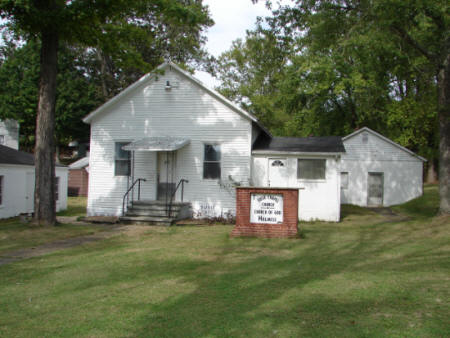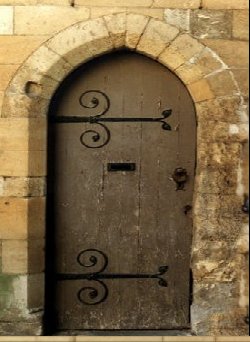|
The Church in the Wildwood

The Herald Dispatch - Saturday, July 25, 1998 - By Bob Withers
The Church In The Wildwood
Church's Campground Still Draws Crowds 101 Years After Congregation Was
Formed
"It isn't like it used to be," Bob Perdue says.
But, even though Susie Chapel Church of God Holiness on West
Virginia 10 hasn't seen regular worship services in at least 15 years
and most of its members lie in the cemetery out back, its campground
still occasionally draws big crowds 101 years after the congregation was
formed.
Take, for instance, the camp last week that featured the Rev. Omar
Lee of Overland Park, Kan., and attracted an average daily crowd of 120
that peaked at 147.

For eight straight days, about 30 children younger than 16 heard the
Word of God, several families lived in a row of cabins behind the
church, and dining hall personnel served about 70 people three square
meals sandwiched between prayer meetings, children's church, youth
activities, harmony hours and worship services.
The camp came about because of two holiness preachers, Manford and
James Paugh, who came from New Martinsville, W. Va., and settled in the
area.
"When they came into this country, everybody called them fanatics," says
Paul Johnson a grandson of Manford Paugh who lives on top of the hill
behind the camp. "They believed in making a joyful noise unto the Lord."
The Paughs held meetings even before they bought ground.
"The first camp meeting was in 1897," Perdue, a cemetery trustee,
says. "The meeting was held in a tent and attendees stayed in tents and
covered wagons. Cooking was on outdoor fires and families shared their
meals with one another."
James eventually bought 100 acres where the camp is, and Manford
bought 200 acres across the road.
"Manford had a bad bean crop, sold out and bought a farm on Smith
Creek," Johnson says.
"But he came back and bought James' land - all except three acres he
reserved for his brother - and sold two acres to the church in 1900."
That's when the next camp was conducted.
Actually, Paugh wanted to give the land to the congregation,
Johnson says, but was advised that if he did so and the church ever
ceased meeting, the parcel would revert to his heirs.
"So he sold the land for $100, then donated the money back to the
church," he says.
The church was constructed in 1903. James Paugh was the first
pastor, and the building was named for Susie Dillon Paugh, his wife.
"Eventually, a wooden tabernacle was built that had a sawdust
floor and solid windows that were propped open to allow air
circulation," Perdue says.
"There were no screens, and no ventilation. Meetings were held in
late August when the weather was not so hot."
Today, block buildings have replaced the original tabernacle,
dining hall and several cabins.
The camp is administered by a committee composed of pastors and
lay delegates from sister churches - such as Jackson Avenue and Crooks
Chapel.
But for years, the congregation thrived.
Pastors and their families stayed in the two-story frame dormitory
on the hill behind the bottom row of cabins and lived off parishioners'
produce.
Then times started changing.
"Life got too expensive," Johnson says. "People quit contributing
their chickens and eggs."
Johnson remembers how one preacher botched a freewill offering as
times were getting tough.
"He said, 'Whoever will donate a hen to the camp raise your hand.'
Albert Smith, James' son-in-law, raised his hand. 'God bless you,
Brother Smith,' the preacher said, 'for donatin' five big fat hens!'
With his hand still in the air, Smith's hand closed into a clenched fist.'"
The congregation grew older and older, and started dying out.
"It would dwindle down and a pastor would come in and fire it up a
little," Perdue says. "Then it would dwindle again."
"I know of only two members who are still alive," says the Rev.
Ronald R. Mayhle, pastor of the Jackson Avenue church and current
president of the camp.
But Mayhle sees a bright future.
"Last year, our camp attendance was up by 33 percent over 1996 and
this year by 45 percent," Mayhle says.
"We raised $6,000 toward the $10,000 we need to rebuild the camp."
Three cabins already have been razed and two more are targeted. In
their place will be a four-unit dorm with bath and air conditioning.
Proceeds from a bean supper in August and singspiration supper in
September also will help finance the project.
(Article Courtesy of Rusty Dillon)

|


